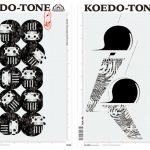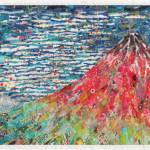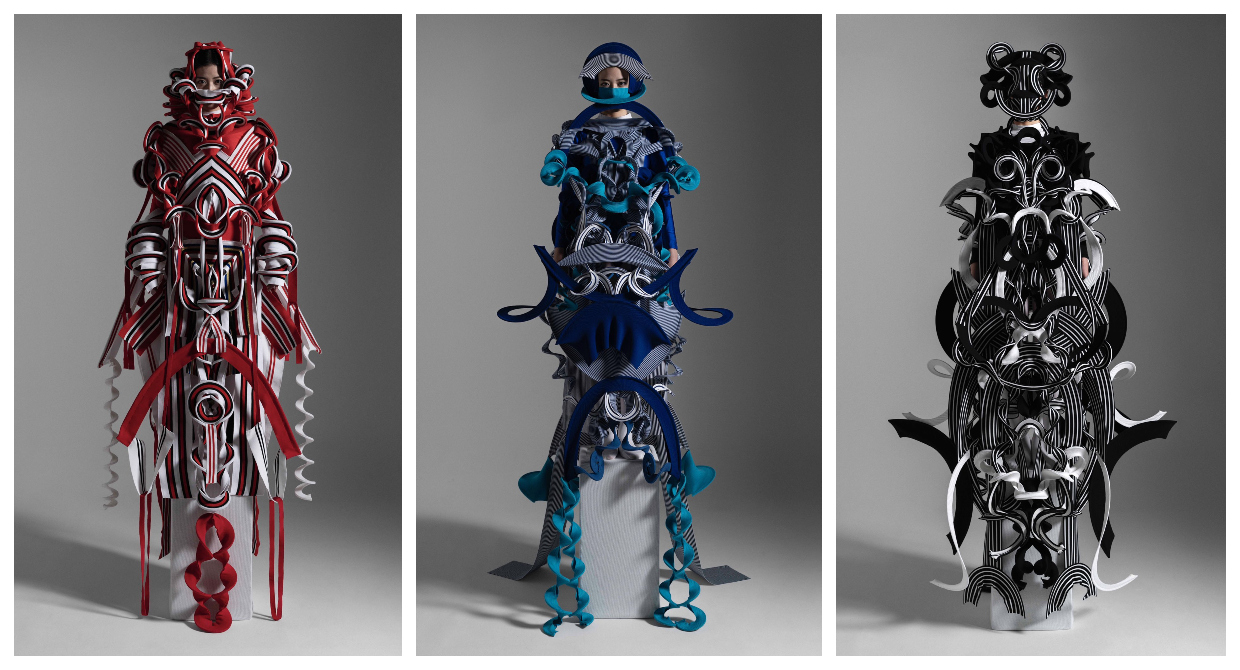
photos by Kenji Agata
Jomon-era pottery, created roughly 4000-5000 years ago, is considered to be the oldest pottery in Japan. Jomon (縄文) literally means “rope-patterned” and as the name implies, much of the pottery was elaborately designed with coils and imprints, rendering them more decorative than functional. “The decoration and modeling of Jomon pottery is designed for the wishes and prayers for life,” explains Ryunosuke Okazaki, a graduating fashion student who recently created a series of haute couture dresses inspired by Jomon pottery.
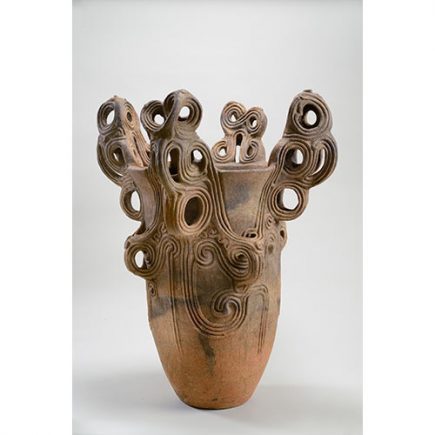
The “Suienmon-doki” (2000 – 3000 BCE) is considered a national treasure of Japan
– Shakadou Museum of Jomon Culture
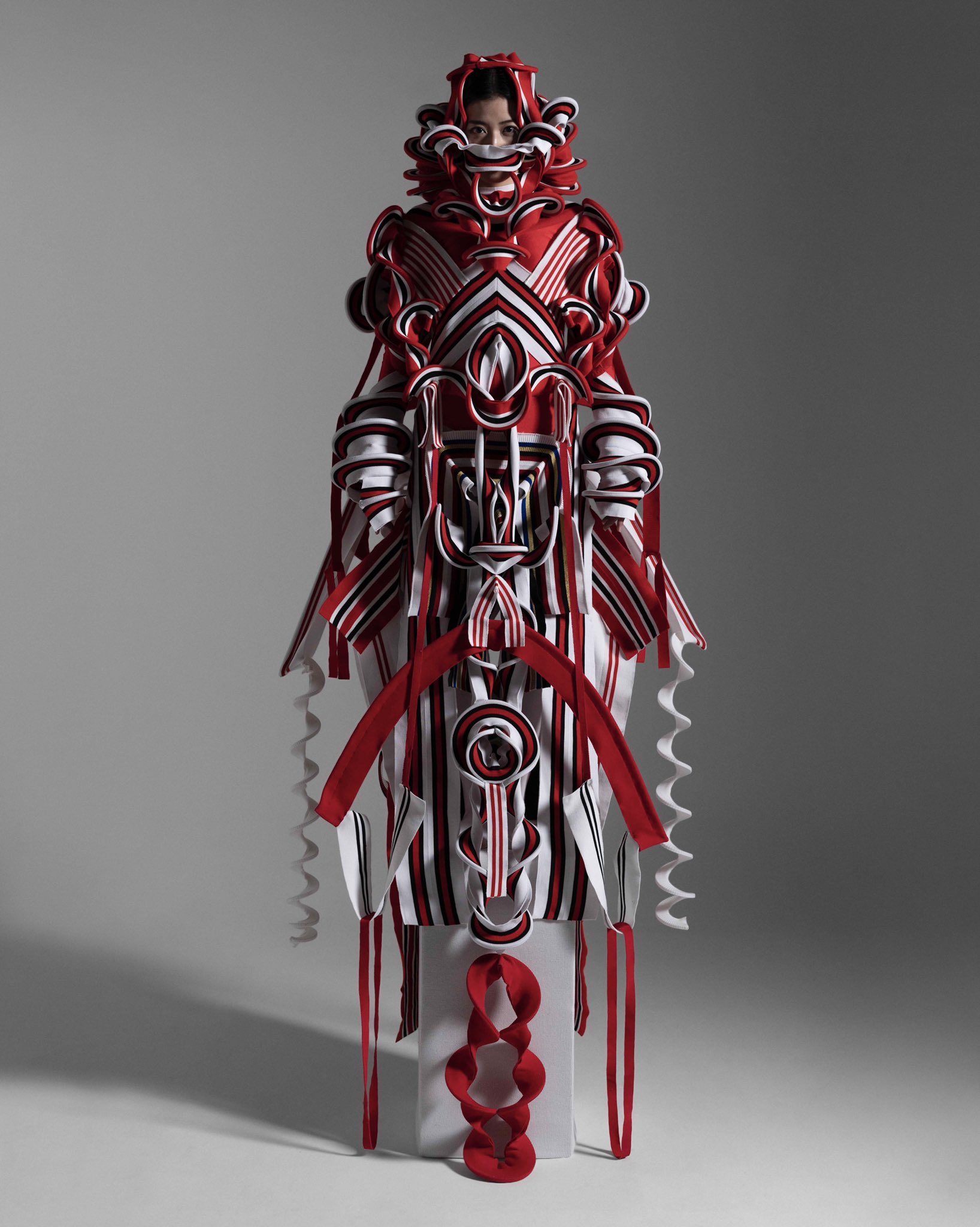
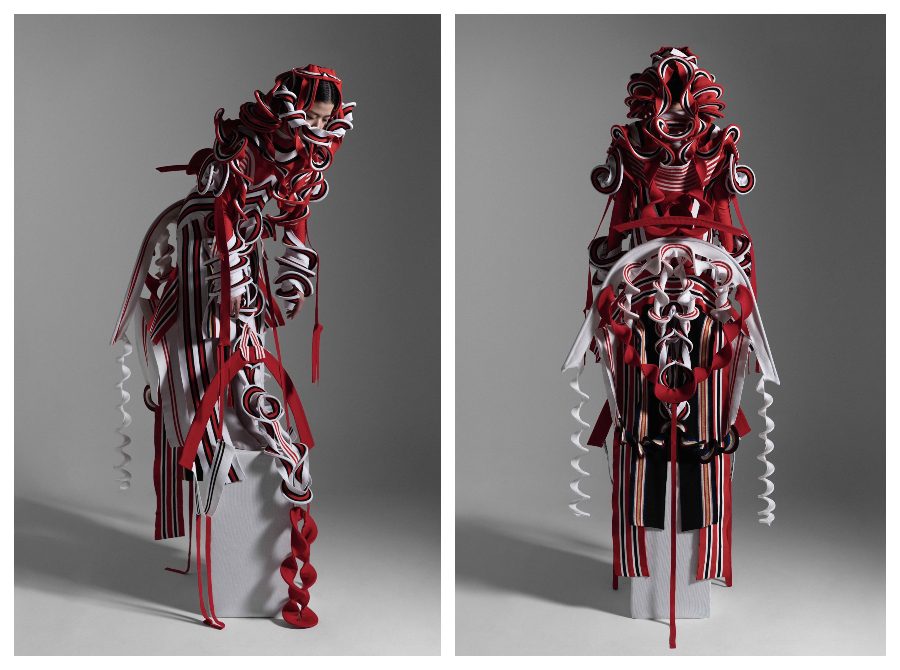
Ryunosuke Okazai is a student at Tokyo University of the Arts who is graduating this year with an MFA in design. For his graduating thesis exhibition he’s created a series of dresses titled JOMONJOMON that take inspiration from Jomon-era pottery and the roots of Shinto, Japan’s indigenous religion that emphasizes a reverence for nature.
“People in Jomon period had found the existence of God in nature, because they used to be constantly exposed to fear of nature,” says Okazai, who saw parallels between that time and our current era of living through a pandemic. We are constantly reminded of death and it feels closer than ever before, a state-of-mind that was likely shared by the artist’s ancestors.
Just like they channeled their fears of death and hopes for life into pottery, Okazaki did the same with his dresses. “I incorporated the decorations and sculptures that continued from the Jomon period to modern Shinto into the design, and created a new sculpture with the wish for life in the present days.”
You can keep up with the artist on Twitter and Instagram.
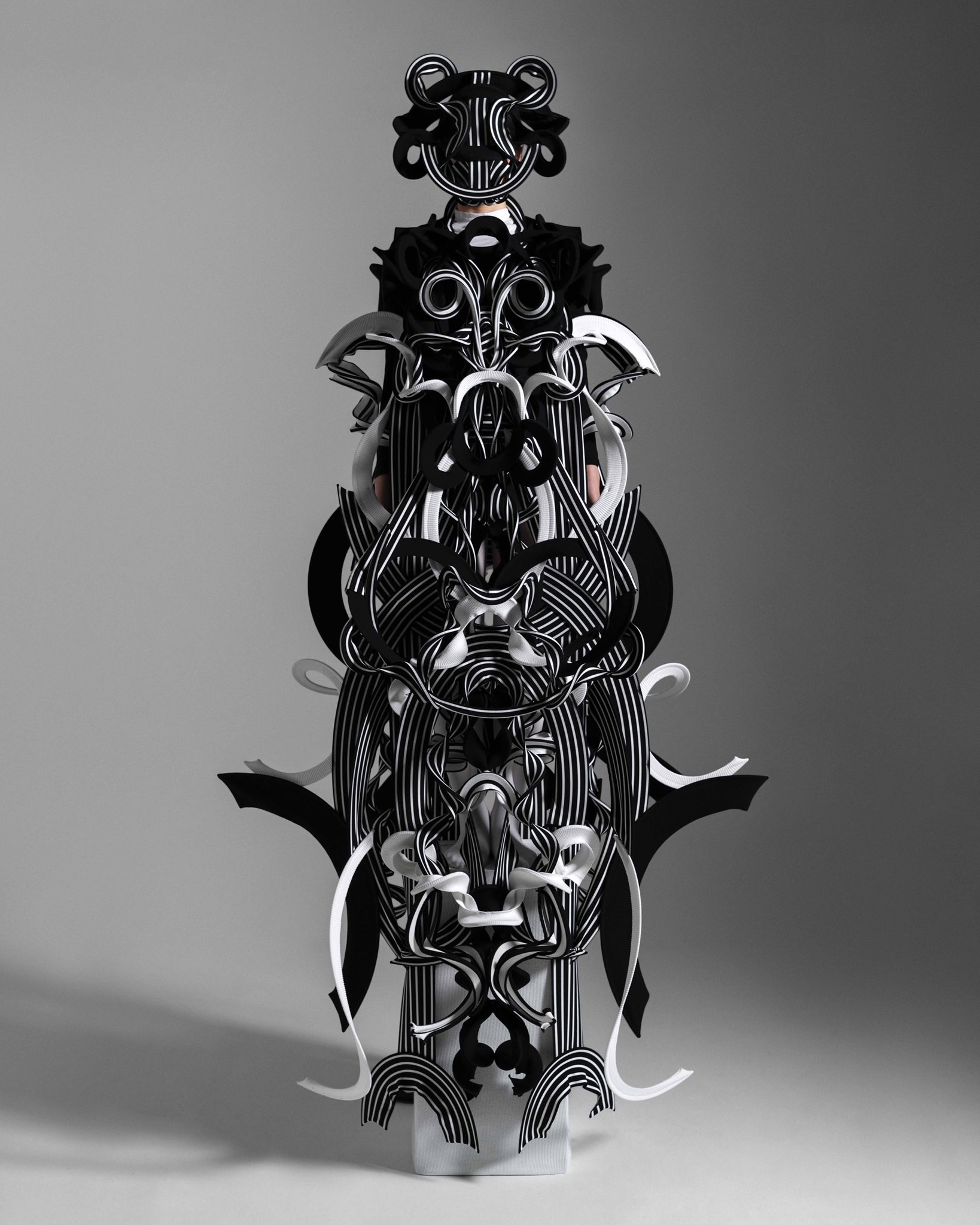
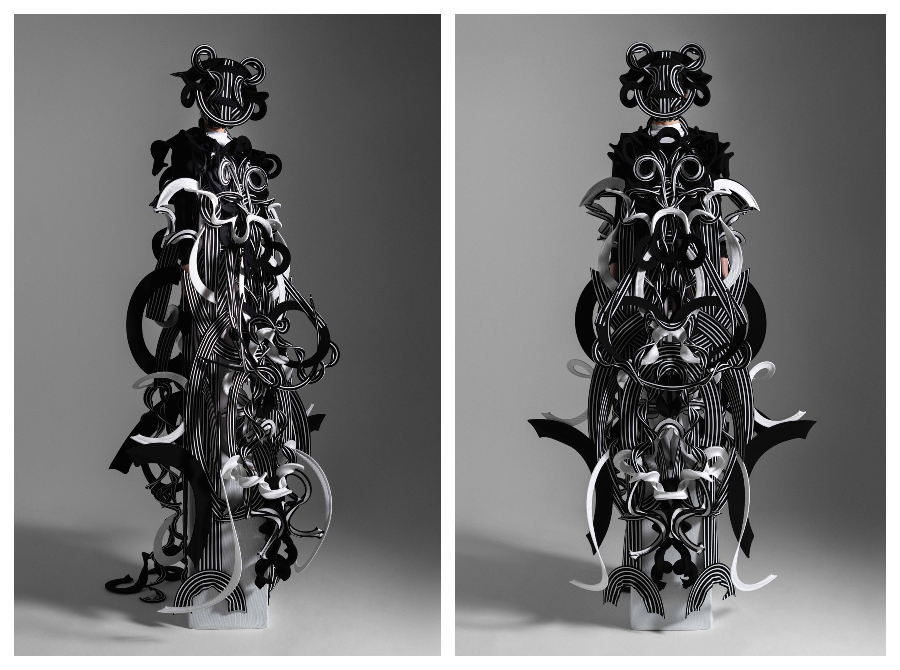
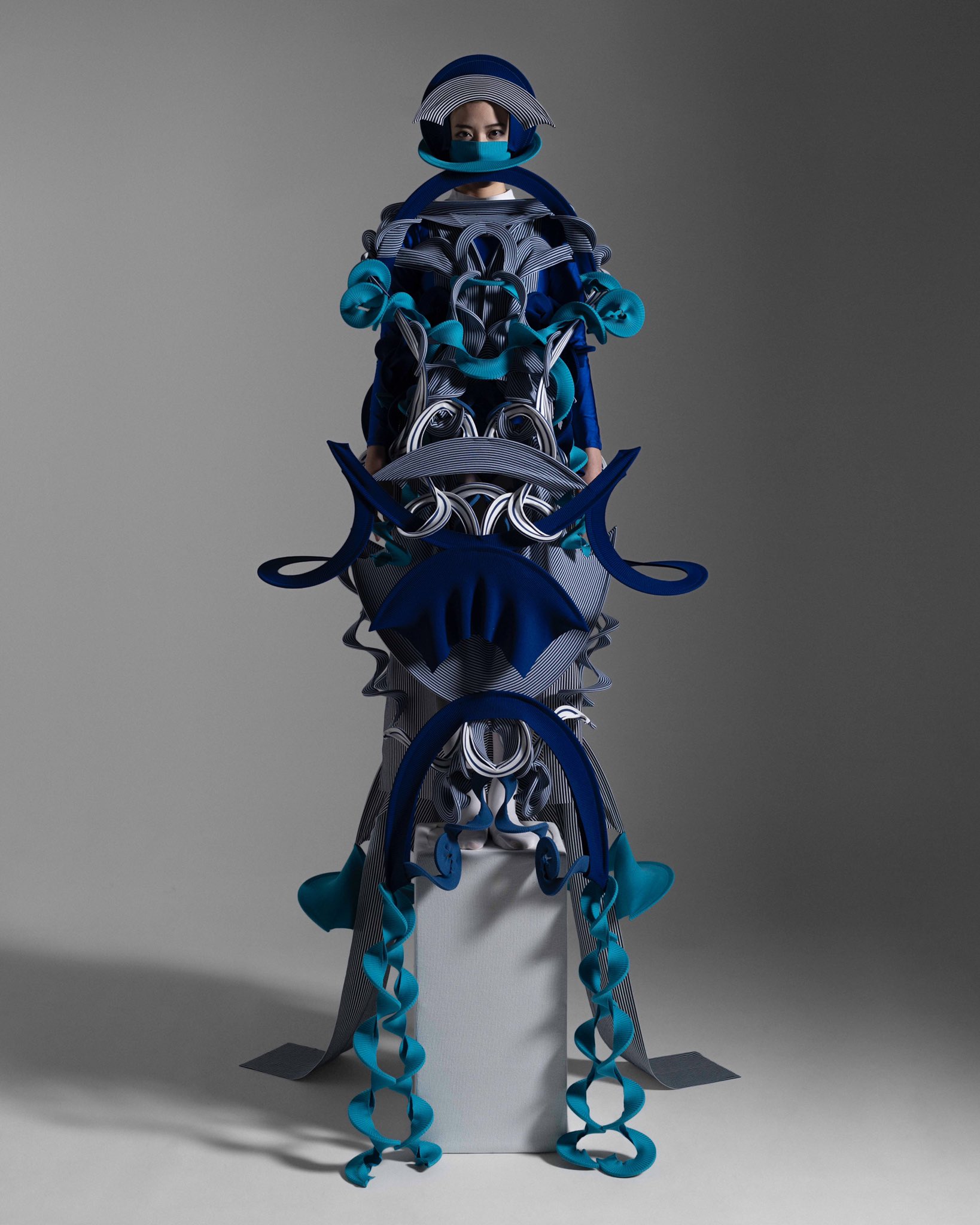
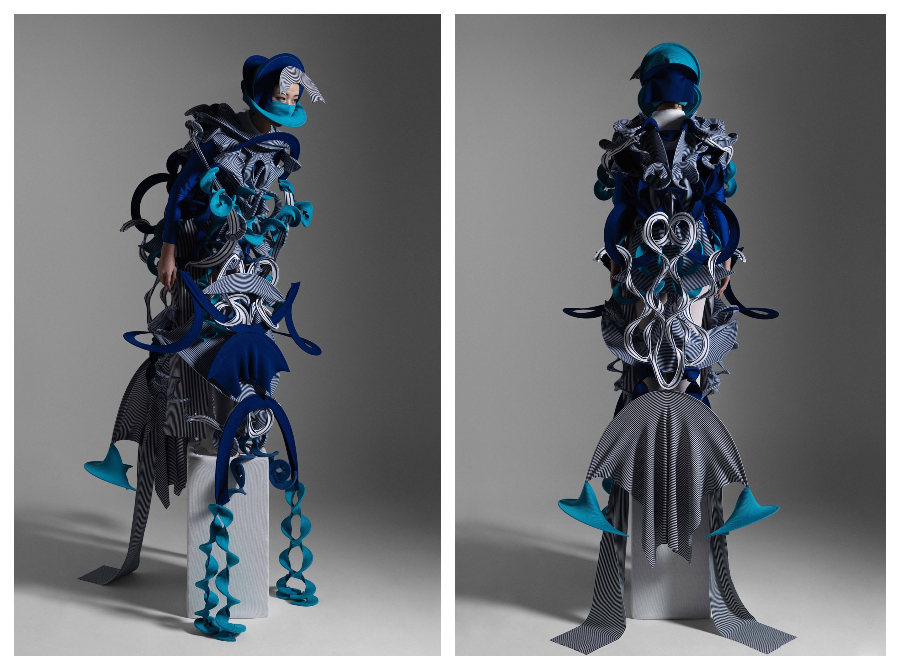
In Japan, early spring is graduation seasons so around this time of year we often feature some of our favorite student work from the thesis exhibitions of Japanese art and design universities. You can find all our previous posts here.



